《COMPARATIVE LAW OF MONOPOLIES》
| 作者 | 编者 |
|---|---|
| 出版 | GRAHAM TROTMAN |
| 参考页数 | 823 |
| 出版时间 | 1988(求助前请核对) 目录预览 |
| ISBN号 | 1853335177 — 求助条款 |
| PDF编号 | 812918418(仅供预览,未存储实际文件) |
| 求助格式 | 扫描PDF(若分多册发行,每次仅能受理1册) |
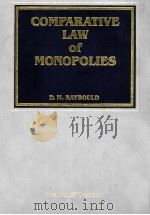
PART 1INTRODUCTION1
PART 2NATIONAL LAWS OF MONOPOLY9
U.S.A.11
1.Summary of Antitrust Laws11
1.1Outline of the Substantive Provisions11
2.Sherman Act,Section 114
2.1Concerted Action14
2.2 Intracorporate Conspiracies15
2.3 Conscious Parallelism17
2.4 Effect of Withdrawal from Concerted Action Conspiracies18
2.5 The Requirement for an Effect upon Trade or Commerce19
2.6 Per Se Unlawfulness and the Rule of Reason24
2.7The Application of Section 1 to Particular Restraints27
2.7.1 Price-fixing Arrangements and Vertical Price Discrimination27
2.7.2 Division of Markets or Customers37
2.7.3 Boycotts and Refusals to Deal41
2.7.4 Reciprocal Practices44
2.7.5 Tie-ins and Exclusive Contracts45
2.7.6 Industrial Property Licensing56
2.7.7 Other Restraints59
2.8 Standing and Antitrust Injury59
3.Sherman Act,Section 260
4.The Clayton Act61
4.1Clayton Act-Introduction61
4.2Section 3-Exclusionary Arrangements62
4.2.1 Exclusive Dealing Contracts65
4.2.2 Requirements Contracts66
4.2.3 Tying Arrangements67
4.3 The Anti-Competitive Effect70
5.The Federal Trade Commission Act72
5.1Introduction72
5.2 Jurisdictional Requirements73
5.3 Unfair Methods of Competition74
5.4 Unfair or Deceptive Acts or Practices76
6.The Robinson-Patman Act78
6.1Introduction78
6.2 Jurisdictional Requirements79
6.3 The Requirement of Competitive Injury87
6.4 Statutory Defences to a Robinson-Patman Act Violation89
7.Monopolisation and Attempts to Monopolise92
7.1Introduction92
7.2 Actual Monopolisation94
7.3Attempts to Monopolise113
7.3.1 Introduction113
7.3.2 The Dangerous Probability Requirement114
7.3.3 The Relevant Market118
7.3.4 Specific Intent to Monopolise120
7.4 Monopolies and Attempts by a Plurality of Firms and Conspiracies to Monopolise121
8.Mergers123
8.1Introduction123
8.2 The Requirement for Pre-notification of Mergers129
8.3Merger Evaluation131
8.3.1 The Relevant Market:The Product Market131
8.3.2 The Relevant Market:The Geographic Market139
8.3.3 The Substantive Criteria for Merger Evaluation141
9.Interlocking Directorates164
10.Joint ventures167
11.Jurisdictional Aspects176
EEC183
1.Summary of Competition Laws183
1.1Introduction to EEC Competition Law183
1.1.1 Community Law and National Law183
1.1.2 Overview of the Treaties185
1.1.3 The Principal Competition Provisions186
1.1.4 Interaction between Competition Provisions190
2.Article 85-Introduction191
2.1Agreements,Decisions and Concerted Practices193
2.2 Undertakings,Associations of Undertakings197
2.3 Effect on Trade between Member States198
2.4 The Anti-competitive Effect200
2.5 Effect on Foreign Trade202
2.6Application of Article 85(1) to Particular Types of Agreement205
2.6.1 Horizontal Agreements206
2.6.2 Vertical Agreements220
2.6.3 Other permitted Forms of Co-operation247
3.Crisis Cartels274
4.Joint ventures280
4.1General280
4.2Treatment of Joint Ventures under Articles 85 and 86281
4.2.1 Commission Treatment of Joint Ventures,1968-1980281
4.2.2 Recent Decisions on Manufacturing Joint Ventures286
4.2.3 Joint Venture for Component and Know-how Supply291
4.2.4 Distribution Joint Ventures292
4.2.5 Specialisation Joint Ventures294
4.3 Application of Block Exemption Regulations to Particular Joint Ventures295
4.4 The Irish Distillers Case295
4.5 Treatment of Joint Ventures under the 1989 Merger Control Regulation297
5.Article 86-Introduction298
5.1The Dominant Position300
5.2Abuse of a Dominant Position312
5.2.1 Refusal to Supply314
5.2.2 Applying Dissimilar Conditions to Equivalent Transactions318
5.2.3 Making the Conclusion of Contracts Subject to Acceptance by the other Parties of Supplementary Obligations321
5.2.4 Limiting Production,Markets or Technical Development to the Prejudice of Consumers322
5.2.5 Unfair Exploitation324
5.2.6 Residual Categories of Anti-competitive Conduct327
6.Mergers333
6.1Article 86 and Mergers333
6.2 Merger Control Regulation337
6.3 Enforcement under Article 86 in Relation to Mergers341
7.Intellectual Property and Free Movement of Goods in the Common Market346
GERMANY347
1.Outline of the Substantive Provisions347
1.1Introduction347
1.2The Substantive Provisions of the GWB in Summary348
1.2.1 Prohibition of Cartel Agreements and Cartel Resolutions348
1.2.2 Exceptions from the Prohibitions of Section 1350
1.2.3 Prohibition of Anti-competitive Provisions in Vertical Agreements355
1.2.4 Abusive Practice by Market-dominating Enterprises,Discriminatory Conduct and Merger Control358
1.2.5 Joint ventures358
2.Control of Abusive Behaviour by Market dominating Enterprises360
2.1Introduction360
2.2 The Definition of a Market dominating Enterprise361
2.3Abuse Control under Section 22365
2.3.1 Abusive Conduct365
2.3.2 Remedies for Abusive Conduct under Section 22367
2.4Specialised Categories of Abusive Conduct368
2.4.1 Section 25(1):Concerted Conduct to Achieve Unlawful Purpose368
2.4.2 Section 25(2):Threats,Promises to Induce Unlawful Conduct369
2.4.3 Section 25(3):Coercion of other Enterprises369
2.4.4 Section 26(1):Requests for Imposition of Restrictions in the Supply or Purchasing of Goods or Commercial Services370
2.4.5 Section 26(2):Hindrance and Discrimination by Market dominating and other Enterprises370
2.4.6 Section 26(3):Inducement of Preferential Terms by Market dominating Enterprises372
2.4.7 Section 26(4):Exploitation of Market Power that Causes Unfair Hindrance for Competitors373
2.4.8 Section 26(5):Burden on Firms Caught by Section 26(4) to Rebut the Presumption of Exploitation373
2.5 Relationship between Abuse Control under Section 22 and Control under Section 26(2) and (3)373
3.Merger Control374
3.1Introduction374
3.2 Definition of the Term 'Merger'374
3.3Mergers Excepted from Control376
3.3.1 Section 24(8)376
3.3.2 ECSC Treaty376
3.4Notification of Mergers to the Federal Cartel Office377
3.4.1 Pre-notification377
3.4.2 Reporting of Consummated Mergers377
3.4.3 Voluntary Notification of Mergers378
3.5Substantive Law of Merger Control378
3.5.1 Introduction:Creation or Strengthening of a Market dominant Position378
3.5.2 Market Definition378
3.5.3 Market Domination380
3.5.4 Creation or Strengthening of a Dominant Market Position382
3.5.5 Balancing of Pro- and Anti-competitive Consequences387
3.5.6 Powers of the Cartel Authorities under Section 24388
3.5.7 Powers of the Federal Minister for Economics388
3.6 The Application of the GWB to International Mergers389
U.K.392
1.Introduction392
1.1Common Law Prior to 1948392
1.2 The Main Legislation 1948-1980395
2.An Outline of the Substantive Provisions399
2.1Restrictive Trading Agreements and Arrangements399
2.1.1 Introduction399
2.1.2 Restrictive Agreements as to Goods399
2.1.3 Restrictive Agreements as to Services407
2.1.4 Information Agreements as to Services407
2.1.5 Excepted Agreements as to Services408
2.1.6 General Exceptions408
2.1.7 The Public Interest Criteria409
2.1.8 General412
2.2Resale Price Maintenance413
2.2.1 Introduction413
2.2.2 Collective Resale Price Maintenance414
2.2.3 Individual Resale Price Maintenance415
2.2.4 Exemption by the Restrictive Practices Court415
2.2.5 Enforcement415
3.Monopolies416
3.1General416
3.2 A Monopoly Situation Qualifying for Investigation417
3.3 The Monopoly Reference,Investigation and Report421
3.4 Powers of Minister Following a Report by the Commission423
3.5The Public Interest424
3.5.1 Structural Monopoly and the Public Interest426
3.5.2 Conduct and Performance426
4.Merger Control443
4.1Introduction443
4.2Merger Situations Qualifying for Investigation443
4.2.1 Definition of the Term 'Merger'443
4.2.2 Mergers that Qualify for Investigation445
4.3 The Reference,the Report and Action Following the Report447
4.4The Public Interest and Mergers448
4.4.1 Introduction448
4.4.2 Effects upon Competition450
4.4.3 Other Specific Aspects of the Public Interest in Relation to Mergers462
4.4.4 The Overall Impact of the Public Interest Test464
5.The Competition Act467
5.1Introduction467
5.2Procedure467
5.2.1 OFT Investigation467
5.2.2 The Competition Reference469
5.2.3 Orders Consequent on the Report471
5.3The Anti-competitive Practice472
5.3.1 Selective Distribution Systems472
5.3.2 Foreclosure of the Market to Competitors473
5.3.3 Refusal to Supply474
5.3.4 Pricing Policies476
5.4 Efficiency Audits in the Public Sector476
PART 3COMPARATIVE EVALUATION OF THE ANTI-MONOPOLY LAWS IN THE FOUR JURISDICTIONS479
1.Introduction479
2.Monopolies482
2.1The Term 'Monopoly'482
2.1.1 Product Market Definition484
2.1.2 Geographic Market Definition486
2.1.3 Market Power488
2.1.4 Non-structural Features that Establish Market Power490
2.1.5 The Time-scale within which Market Power is to be Measured495
2.1.6 The Use of Conduct Factors to Prove Monopoly or Dominance-A Final Comment497
2.2Monopolisation/Abuse497
2.2.1 The Requirement for Intent497
2.2.2 The Principal Elements in Monopolisation/Abuse500
2.2.3 A Comparison of the Policy Objectives in Relation to Monopolisation/Abuse Control513
2.2.4 Prevention and Control of Monopoly Power513
2.2.5 Joint Monopoly and Oligopoly528
2.3 Remedies for Monopolisation/Abuse533
3.Mergers541
3.1Mergers within the Control541
3.2 Pre-notification Requirements543
3.3Substantive Law of Merger Control546
3.3.1 The Relevant Market546
3.3.2 Common Criteria for all Mergers550
3.3.3 Horizontal Mergers556
3.3.4 Vertical Mergers564
3.3.5 Conglomerate Mergers568
3.3.6 Joint ventures572
Index581
APPENDICES1
Appendix A1
Sherman Act 1890 (15 U.S.C.1 et seq.;26 Stat.209 et seq.)1
Clayton Act 1914 (15 U.S.C.12 et seq.;38 Stat.730 et seq.)3
Appendix B1
Article 85(1) Treaty of Rome1
Article 86 Treaty of Rome1
Commission Regulation (EEC) No.556/89-Know-how Licensing Agreement3
Commission Regulation (EEC) No 4087/88-Franchising Agreements17
Council Regulation (EEC) No.4064/89-on the Control of Concentrations between Undertakings25
Commission Regulation (EEC) No 2367/90-Notifications,Time Limits and Hearings under Council Regulation (EEC) No.4064/89 on Control of Concentrations between Undertakings37
Commission Notice 90/C203/05 regarding Restrictions Ancillary to Concentrations57
Commission Notice 90/C203/06 regarding the Concentrative and Cooperative Operations under Council Regulation 4064/89 on Control of Concentrations between Undertakings63
Text Commission draft paper on Joint Ventures iv/471/85-EN69
Appendix C1
Restraint of Competition Act 1989 (consolidated)1
Appendix D1
Competition Act 1980 (c.21)1
1988《COMPARATIVE LAW OF MONOPOLIES》由于是年代较久的资料都绝版了,几乎不可能购买到实物。如果大家为了学习确实需要,可向博主求助其电子版PDF文件(由 1988 GRAHAM TROTMAN 出版的版本) 。对合法合规的求助,我会当即受理并将下载地址发送给你。
高度相关资料
-
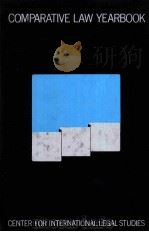
- COMPARATIVE LAW YEARBOOK VOLUME 9
- 1987 MARTINUS NIJHOFF PUBLISHERS
-

- Judicial review in comparative law
- 1989 Cambridge university press
-
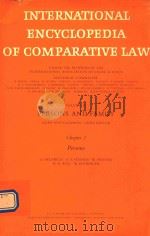
- INTERNATIONAL ENCYCLOPEDIA OF COMPARATIVE LAW VOLUME Ⅳ
- 1995 J.C.B.MOHR
-

- INTERNATIONAL ENCYCOPEDIA OF COMPARATIVE LAW
- 1983 MARTINUS NIJHOFF PUBLISHERS
-
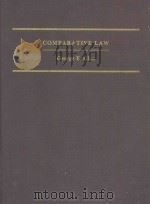
- COMPARATIVE LAW
- 1979 FRED B.ROTHMAN AND CO.
-

- COMPARATIVE SCHOOL LAW
- 1990 PERGAMON PRESS
-
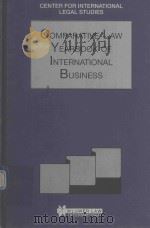
- THE COMPARATIVE LAW YEARBOOK OF INTERNATIONAL BUSINESS VOLUME 17
- 1995 KLUWER LAW INTERNATIONAL
-

- Non-Discrimination law Comparative Perspectives
- 1999 Kluwer Law International
-

- Dictionary of International & Comparative Law
- 1992 Oceana Publications
-

- Comparative Law of Security and Guarantees
- 1995 Sweet & Maxwell
-

- COMPARATIVE PROBATE LAW STUDIES
- 1976 THE AMERICAN LAW INSTITUTE
-
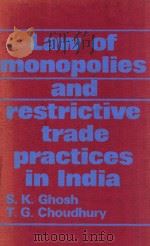
- LAW OF MONOPOLIES AND RESTRICTIVE TRADE PRACTICES IN INDIA
- 1980 PRENTICE-HALL OF INDIA PRIVATE LIMITED
-
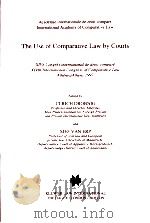
- The Use of Comparative Law by Courts
- 1998 Kluwer Law International
-

- BROADCASTING LAW A COMPARATIVE STUDY
- 1993 CLARENDON PRESS·OXFORD
-
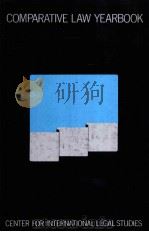
- COMPARATIVE LAW YEARBOOK VOLUME 8
- 1986 MARTINUS NIJHOFF PUBLISHERS
提示:百度云已更名为百度网盘(百度盘),天翼云盘、微盘下载地址……暂未提供。➥ PDF文字可复制化或转WORD